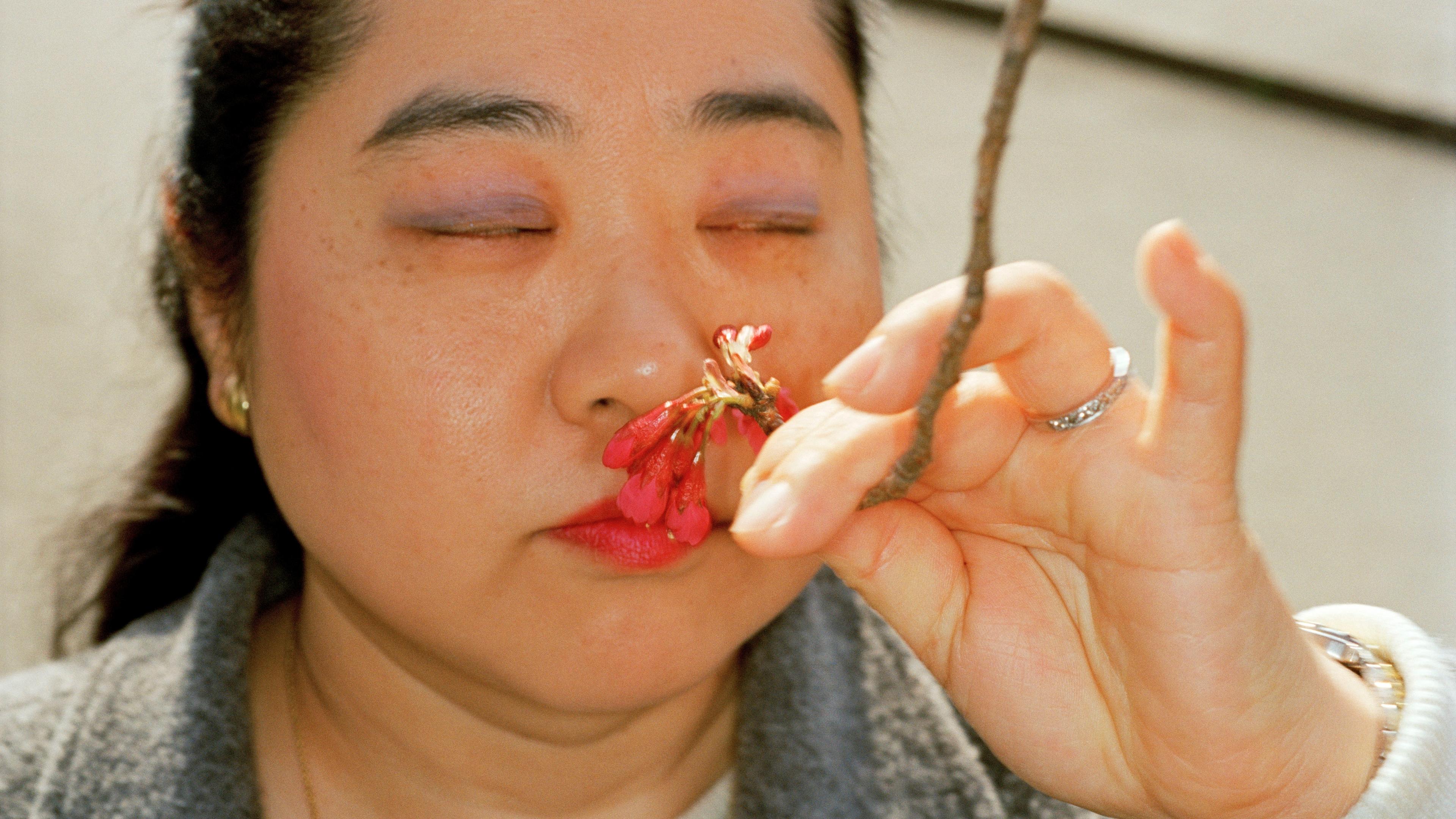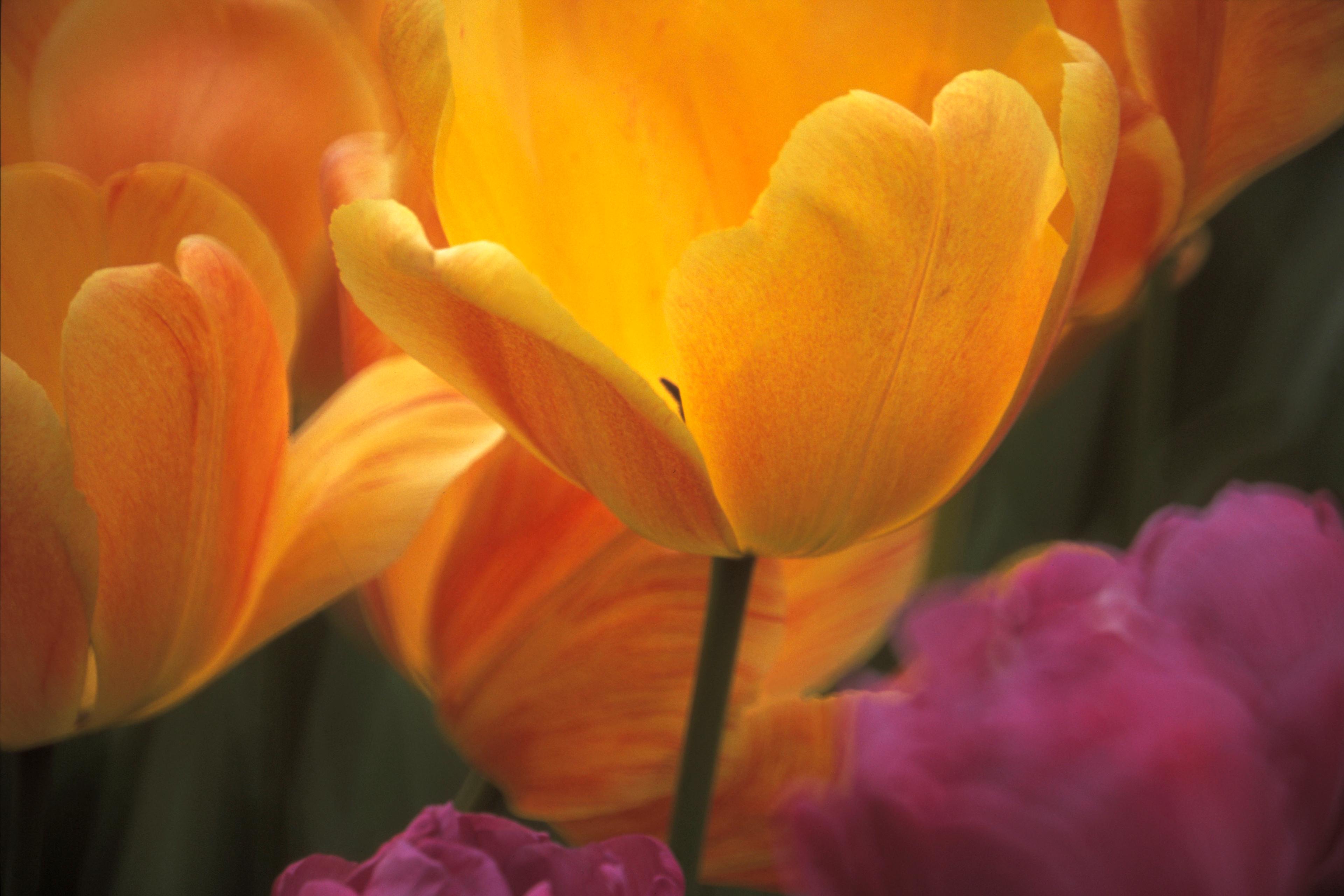It can be hard to describe smells. At times, you might feel as if certain odours are ineffable. You sniff a perfume or a spice mix, and the smells seem familiar. But as soon as you attempt to describe them, you hesitate, searching for the right words. It is well known within the cognitive sciences that people are typically not very good at identifying even familiar smells, such as garlic, peanut butter or lemon – study participants rarely get it right more than 50 per cent of the time in the absence of images or labels. This is in dramatic contrast to the ability to visually identify garlic, peanut butter and lemons. Why this discrepancy between the two senses?
The difficulty with classifying smells is at least in part due to a lack of words for them. Consider colours. We have many words that specifically refer to colours, that can be used for all sorts of coloured things, and that are used widely and uniformly. Red picks out a colour and can be applied to cars, apples, birds and many other things that share the colour. Even young children know how to use the word red with confidence. But contemporary linguists agree that many languages lack an ‘olfactory lexicon’ – that is, a set of words that pick out smell-related qualities, that can be applied to different kinds of things that share a smell, and that are widely and uniformly used.
In English, there is a relatively small number of smell terms, such as scented, smelly and stinky. What these terms tell us is that something has or gives off a smell, and they might indicate whether something has a good smell (eg, fragrant) or a bad smell (eg, acrid). Evaluating whether a smell is good or bad is very important – a bad smell can be a danger signal, for instance. But such language is still fairly vague about what the smell is actually like. Many other languages share with English the lack of a smell lexicon. (How are things in your mother tongue? Can you think of an olfactory word that works the way red does for colour?) Smells, linguists conclude, are generally not very expressible in language.
Now, this is not a universal fact. As a body of work by the cognitive scientist Asifa Majid and colleagues is revealing, there are some languages with rich olfactory lexica, especially within hunter-gatherer societies. The Jahai language, as Majid and Niclas Burenhult have reported, has one single word ‘for the smell of petrol, smoke, bat droppings and bat caves, some species of millipede, root of wild ginger, leaf of gingerwort, wood of wild mango, among other odour sources’. Speakers of such languages also happen to be much better than most of us at correctly and consistently identifying smells. A significant factor in explaining these cross-linguistic differences is likely related to lifestyle: if smells are very important within a linguistic community because they are key to information about food sources and dangers, say, then smells will be talked about more. In turn, this likely leads to broader agreement on words for smells across speakers, and to the development of a stable olfactory lexicon.
Even in the absence of such a lexicon, of course, people still think about, classify, and talk about smells. We do so even in English, French, German, Italian and other languages without specialised smell words. Obvious examples are domains and subcultures in which scents are very important, such as among wine professionals. More generally, most people know what it means for something to smell ‘like strawberries’ or ‘of freshly cut grass’, or to have ‘an old-book smell’. But these are not specifically olfactory terms; they are not analogous to colour adjectives.
What these descriptions do is draw a kind of comparison. In saying ‘this bodywash smells like strawberries’, you convey that the bodywash has a smell that is similar to the characteristic smell of strawberries. Other kinds of smell descriptions can also be understood as explicit or implicit comparisons: for instance, you can say that something has a ‘chocolate smell’ or smells ‘burnt’ (like charred wood). The strategy of describing by comparing is pervasive.
This simple idea can help us understand why people generally manage to understand each other despite lacking a standardised olfactory lexicon. It can also help explain some of the obstacles we encounter. Describing by way of comparison has limitations and imposes specific requirements on speakers.
In general, your smell descriptions will be understood if they make reference to things that are salient within your linguistic community and are associated with recognisable smells. It may be the case that your grandma’s house had a very distinctive smell that impressed itself in your memory. But, since most people won’t know what that smell is like, saying ‘this smells like my grandma’s house’ is not going to take you very far. There has to be a shared reference point. Sometimes, this may be one very specific thing that has one unique smell – such as Chanel No 5 perfume. Other times, the reference point is a broader category that encompasses a fairly wide range of smells. For example: ‘This perfume has a floral smell.’ Flowers can have all sorts of smells, and yet people have a sense of what that description means.
To communicate effectively about smells, you need to know your audience. Our past experiences, culture and environment affect what odorous things we typically encounter, and thus shape the descriptions we choose. You might say of something ‘This smells like popcorn,’ as that would be the obvious exemplar of a certain kind of smell, at least for you and the people in your life. But someone with a different cultural background might equally aptly say ‘This smells like binturong’ – an animal that gives off the same toasted, buttery smell as popcorn. Or think of the description ‘Christmassy smell’. It can be very evocative, but again, it’s dependent on shared culture: some associate the festive season with cinnamon and orange smells, some with wintergreen smells, others with none of these.
One of my favourite examples of a smell being described in different ways that might appeal to different audiences comes from the YouTuber Krist Yu’s video review of ‘bougie’ candles – specifically, her husband’s descriptions of the scents. One candle ‘smells like an old man covering his cigarette smell with cologne’; another ‘smells like a lime that took a shower’. While these descriptions may initially strike you as a little silly, many viewers in the video’s comment section agree that they were actually quite useful for imagining what the scents were like. Yu also reports the ‘notes’ in each scent as described by the candle sellers. Notes for the second candle include grapefruit, cedarwood, patchouli, geranium, amber and vetiver. Maybe you are into perfumes, and so references to these sources of smells are quite helpful to you. But I honestly have no idea what many of these things smell like. A lime that took a shower, on the other hand – I get that.
Multiple possible descriptions, then, can be equally apt for the very same smell. It just depends on the speaker, the audience, and what they share.
Without shared conventions, people are likely to describe the same smell in discrepant ways and may fail to understand each other’s descriptions. Individuals actually can perceive scents differently as a result of genetic variation, but a difference in description does not always mean there is a difference in perception. Rather, the words people choose reflect their past experiences, culture, and the environment they are used to. So when two or more people manage to understand each other while talking about smells by means of comparison, that suggests at least somewhat overlapping experiences. Smell talk is anchored in a familiarity with a shared world of odorous things – such as those limes that many people know from encounters with guacamole and mojitos.
The strategy of describing by comparing is not unique to smell. While English does have specific words for visual, audible, tactile and gustatory qualities (such as pink, loud, rough and sour), even descriptions of these senses very often appeal to familiar things that people can see, hear, touch or taste. You might say that peaches ‘look ripe’ or ‘like doughnuts’, that something ‘sounds empty’ or ‘like a large dog’, that a fabric ‘feels like velvet’, that a cake ‘has a coffee taste’. This strategy allows you to be more precise and informative than if you used only words like pink, round or loud. (In the 2021 film Memoria, a character played by Tilda Swinton describes a recurring sound that she hears as like ‘a big ball of concrete that falls into a metal well which is surrounded by seawater’.) Even in the case of colour, many shades are described with words for things that typically have those colours, such as mint, ochre or peach.
Yet comparisons across groups such as English speakers and hunter-gatherers like the Jahai indicate that the more that people within a culture care about a sensory modality, the more they talk about it and develop a rich, specialised language for doing so. Within mainstream Western cultures, vision takes centre stage; if you went to school in one of these cultures, you were probably more likely to be taught words for colours and shapes than words for smells. When you talk about smells in English or a similar language, then, you need to draw on past experience and broader knowledge and, sometimes, get a bit creative. This makes those moments when two people encounter a new smell, and agree on a good description, a bit special: if you ‘get’ my description, we know we have something in common.








